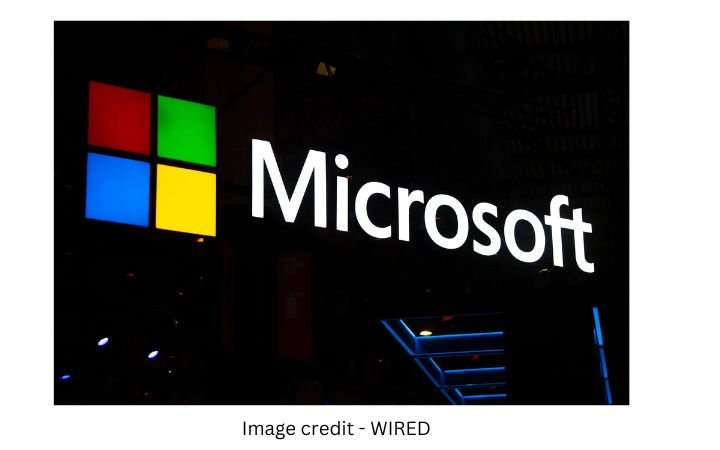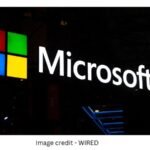Introduction
Microsoft has once again demonstrated its commitment to refining the Windows user experience with the recent rollout of an enhanced Recall feature for Windows Insiders. This significant update marks another step in Microsoft’s ongoing efforts to improve productivity tools within its flagship operating system. The Recall feature, designed to help users quickly find and retrieve past activities, documents, and information, has received substantial upgrades that promise to transform how users interact with their digital history.
In this comprehensive article, we’ll explore the new enhancements to Recall, examine how they benefit Windows Insiders, discuss the technology behind these improvements, and consider what this means for the future of Windows productivity tools. We’ll also look at user reactions, potential applications, and how this fits into Microsoft’s broader strategy for Windows development.
What is Recall in Windows?
Before diving into the enhancements, it’s essential to understand what Recall is and its original functionality. Introduced in earlier Windows versions, Recall serves as a digital memory aid for users. The feature tracks user activities, including opened files, visited websites, used applications, and even specific content within documents. This information is then indexed and made searchable, allowing users to “recall” their past actions with ease.
The original implementation of Recall was useful but had limitations in terms of search accuracy, performance impact, and integration with other Windows features. Users often found it helpful for basic retrieval but wished for more intelligent capabilities and better contextual understanding.
The Enhanced Recall: What’s New?
Microsoft has addressed many of these limitations with the enhanced Recall feature now available to Windows Insiders. The enhancements fall into a number of important categories:
1. AI-Powered Contextual Understanding
The most significant upgrade comes in the form of advanced artificial intelligence integration. The new Recall doesn’t just track activities—it understands them. Using natural language processing and machine learning, Recall can now comprehend the context of your work sessions.
For example, if you were working on a quarterly report that involved spreadsheets, research documents, and email correspondence, Recall can now recognize these as related activities. When you search for information about that report, Recall will present all connected materials, even if you don’t remember specific file names or locations.
2. Cross-Application Recall
The enhanced version breaks down application silos. Where previous iterations might have treated each app’s data separately, the new Recall understands how information flows between applications. Now, data exported from Excel to PowerPoint or text copied from a webpage to a Word document are monitored as related actions.
This cross-application awareness dramatically improves the feature’s usefulness for complex workflows that span multiple programs and services.
3. Timeline Visualization
Microsoft has introduced an improved timeline interface that provides visual representation of your work history. This goes beyond simple chronological listing to show clusters of related activities, intensity of work sessions, and even detects breaks or shifts in focus.
The timeline can be zoomed in and out, allowing users to view their digital history at different scales—from hour-by-hour breakdowns to weekly overviews. Color-coding and visual indicators help quickly identify different types of activities.
4. Proactive Suggestions
Perhaps one of the most exciting enhancements is Recall’s new ability to offer proactive suggestions. Based on your current activity and past patterns, Recall can surface relevant documents, contacts, or reference materials before you even think to search for them.
If you typically check certain reports before starting a monthly presentation, Recall will learn this pattern and have those reports ready when it detects you’re beginning work on the presentation. This anticipatory functionality represents a shift from passive recall to active assistance.
5. Enhanced Privacy Controls
Recognizing the sensitivity of activity tracking, Microsoft has bolstered Recall’s privacy features. Users now have more granular control over what gets recorded, with options to exclude specific applications, websites, or time periods. There’s also a new “private session” mode that temporarily pauses Recall tracking.
All Recall data remains encrypted on the device, and Microsoft emphasizes that none of this information is used for advertising purposes or leaves the user’s control.
6. Performance Optimizations
The enhanced Recall has been rebuilt with performance in mind. Microsoft claims significant reductions in system resource usage, with smarter background processing that minimizes impact on active work. Indexing happens more efficiently, and searches return results faster than in previous versions.
Technical Underpinnings of the Enhanced Recall
The improvements to Recall aren’t just superficial—they’re built on substantial technical advancements within Windows. Several key technologies enable these enhancements:
1. Windows Activity History Platform
Microsoft has developed a more sophisticated activity tracking platform that captures richer metadata about user actions. This includes not just what files were opened, but how they were used, what portions were active, and relationships between different items.
2. Local AI Processing
The contextual understanding and proactive suggestions are powered by AI models that run locally on the device. This ensures privacy while still delivering intelligent features. Microsoft has optimized these models to work efficiently on a wide range of hardware configurations.
3. Graph-Based Data Representation
Behind the scenes, Recall now stores activity data as a knowledge graph rather than simple logs. This allows for more sophisticated relationship mapping between different pieces of information and enables the cross-application understanding that’s central to the new experience.
4. Unified Search Index
The enhanced Recall integrates with Windows Search more deeply, creating a unified index that combines traditional file search with activity recall. This means users can find information through a single interface regardless of whether they remember where it’s stored or when they last used it.
Benefits for Windows Insiders
Windows Insiders—Microsoft’s community of early adopters who test preview builds—are the first to experience these Recall enhancements. For this group, the improved feature offers several immediate benefits:
1. Early Access to Cutting-Edge Productivity Tools
Insiders get to experiment with and provide feedback on features that may shape the future of Windows productivity. Their input can influence final implementations before features reach general availability.
2. Improved Workflow Efficiency
For power users who participate in the Insider program, the enhanced Recall can significantly streamline complex workflows. The ability to retrace steps across multiple applications and recover lost work contexts can save substantial time.
3. Opportunity to Shape Future Development
By using these features early, Insiders can report issues, suggest improvements, and help Microsoft refine Recall based on real-world usage patterns across different professions and use cases.
Potential Use Cases
The enhanced Recall opens up numerous possibilities for different types of users:
1. Content Creators
Writers, designers, and video editors can track iterations of their work, recall research materials, and recover accidentally closed assets more easily. The timeline visualization helps visualize creative process flows.
2. Business Professionals
For those working with complex projects involving multiple documents and communications, Recall can reconstruct the context of decisions and help prepare follow-ups or reports by automatically gathering relevant materials.
3. Researchers and Students
Academic users benefit from Recall’s ability to trace research paths, connect source materials with notes, and recover forgotten references. The cross-application tracking is particularly valuable for research workflows.
4. IT and Development Teams
Developers can use Recall to track debugging sessions, retrace steps in complex configurations, and recover work contexts after interruptions—a common challenge in technical work.
User Reactions and Feedback
Early responses from Windows Insiders have been largely positive, with particular praise for:
- The improved accuracy of contextual searches
- Reduced performance impact compared to previous versions
- The intuitive nature of the new timeline interface
Some concerns and requests have emerged as well:
- Requests for even more granular privacy controls
- Suggestions for cloud synchronization of Recall data across devices
- Questions about long-term storage management for activity history
Microsoft has acknowledged this feedback and indicated that some of these areas may see improvements in future updates.
Comparison with Similar Features
Recall isn’t the only activity tracking feature in the tech landscape. It’s worth comparing it with similar offerings:
1. macOS Time Machine vs. Windows Recall
While both offer historical recovery, Time Machine focuses on file versioning while Recall tracks broader activity context. The enhanced Recall now offers more sophisticated relationship mapping than Apple’s solution.
2. Browser History vs. System-Wide Recall
Traditional browser history is limited to web activity. Recall’s system-wide approach provides a more comprehensive picture of digital activities across all applications.
3. Third-Party Activity Trackers
Various third-party tools offer similar functionality, but Microsoft’s deep integration with Windows gives Recall advantages in performance, reliability, and system access.
Privacy and Security Considerations
With any activity tracking feature, privacy is a paramount concern. Microsoft has implemented several safeguards:
- All Recall data is stored locally and encrypted
- Users have clear visibility into what’s being tracked
- Easy-to-use controls allow exclusion of sensitive applications or activities
- Enterprise versions will include additional administrative controls for organizations
The company emphasizes that Recall is designed as a productivity aid, not a surveillance tool, and puts control firmly in users’ hands.
Future Possibilities
The enhanced Recall rollout suggests several interesting directions for future Windows development:
1. Cross-Device Recall
Future versions might synchronize Recall data across a user’s devices (with appropriate privacy controls), creating a continuous memory of work regardless of which device was used.
2. Team and Collaborative Recall
For enterprise users, there’s potential for team-based recall features that help groups reconstruct collaborative work contexts and decision processes.
3. Integration with Microsoft 365
Deeper connections with cloud services could allow Recall to incorporate online activities and documents stored in OneDrive or SharePoint.
4. Predictive Workflow Assistance
As the AI components become more sophisticated, Recall could evolve from remembering to anticipating—suggesting entire workflows based on past patterns and current objectives.
How to Access the Enhanced Recall
For Windows Insiders interested in trying the enhanced Recall:
- Ensure you’re running the latest Windows Insider Preview build (check Settings > Update & Security > Windows Insider Program)
- Recall should be enabled by default, but can be verified in Settings > Privacy > Activity History
- The Recall interface can be accessed through the taskbar search or with the Win + R shortcut
Microsoft typically rolls out new features gradually, so not all Insiders may have immediate access. Those particularly interested in testing Recall should ensure they’re on the most recent build and in the appropriate Insider channel (usually Dev or Beta for major new features).
Conclusion
Microsoft’s enhanced Recall for Windows Insiders represents a significant step forward in personal productivity technology. By combining comprehensive activity tracking with AI-powered contextual understanding, the feature moves beyond simple memory aid to become an intelligent assistant for digital workflows.
The improvements in cross-application tracking, visualization, and proactive suggestions address many of the limitations of previous versions while introducing innovative new capabilities. For Windows Insiders, this provides an exciting opportunity to shape the future of a feature that could fundamentally change how we interact with our digital workspaces.










